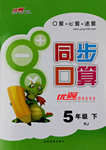题目内容
1826, a Frenchman named Niepce needed pictures for his business .But he was not a good artist.So he invented a very simple camera (照相机).He put it in a window of his house and took a picture of his garden .That was the first photo.
The next important date in the history of photography was 1837. That year, Daguerre, another Frenchman, took a picture of his studio. He used a new kind of camera and a different processs. In his pictures, you could see everything very clearly, even the smallest details. This kind of photograph was called a daguerreotype.
Soon, other people began to use Daguerre's process. Travellers brought back daguerreotypes from all around the world. People photographed famous buildings, cities and mountains.
In about 1840, the process was improved. Now photographers could take pictures of people and moving things. The process was not simple. The photographers had to carry lots of film and processing equipment. But this did not stop the photographers, especially in the United States, where from the 1840s daguerreotype artists were popular in most cities.
Mathew Brady was a well-known American photographer. He took many pictures of famous people. The pictures were unusual because they were very life-like and full of personality.
Brady was also the first person to take pictures of war. His 1862 Civil War pictures showed dead soldiers and ruined cities. They made the war seem more real and more terrible
In the 1880s, new inventions began to change photography. Photographers could buy film readymade in rolls. So they did not have to make the film immediately. They could bring it back to their studios and develop it later, meaning that they did not have to carry lots of equipment. And finally, the invention of the small handheld camera made photography less expensive.
With the small camera, anyone could be a photographer. People began to use cameras just for fun. They took pictures of their families, friends and favourite places. They called these pictures "snapshots".
Photographs became very popular in newspapers in the 1890s. Soon magazines and books also used documentary photographs. These pictures showed true events and people. They were much more real than drawings.
Photography had turned into a form of art by the beginning of the 20th century. Some photographs were not just copies of the real world. They showed ideas and feelings, like other art forms
- 1.
The passage is mainly about______.
- A.the invention of cameras
- B.a kind of new art -- photography
- C.the development of photography
- D.the different uses of cameras in history
- A.
- 2.
The first pictures of a war were taken by______.
- A.a French photographer in the 1840s
- B.an American photographer in the 1860s
- C.a German reporter in the 1880s
- D.a French artist in the 1890s
- A.
- 3.
Which of the following statements is TRUE about the photography in the 19th century?
- A.It was mainly based on the invention of the first photograph
- B.Photographers were popular in the United States because they carried lots of equipment
- C.Photographers used to make film themselves and developed it immediately after taking a photo
- D.Small handheld cameras made it possible for anyone to become a gifted photographer
- A.
- 4.
In which order are the following statements mentioned in the passage?
a. Photographs became popular in newspapers.
b. Photographers carried processing equipment when taking pictures.
c. The invention of small handheld cameras made photography easier.
d. Daguerre invented a kind of photograph called daguerreotype.
e. Brady took pictures of famous people- A.e,a, d, b, c
- B.d, b, e, c, a
- C.b, e, c, a, d
- D.d, c, e, a , b
- A.
- 5.
Photography can also be an art form because artists can______.
- A.take anything they like
- B.keep a record of real life
- C.take photos of the famous
- D.show ideas and feelings in pictures
- A.
CBCBD
试题分析:这篇短文主要介绍了摄影术的发展历史,其中重点介绍了每个历史阶段的重要人物。
1.这篇短文主要描述了摄影术的发展历史,故选C,摄影术是怎样发展的。
2.从第五段Mathew Brady was a well-known American photographer及第六段 Brady was also the first person to take pictures of war.His 1862 Civil War pictures showed dead soldiers and ruined cities可知选答案B。
3.根据In the 1880s, new inventions began to change photography. Photographers could buy film ready made in rolls. So they did not have to make the film immediately可知过去摄影者要自己做胶片,照相后马上冲洗。故选C。
4.根据文章时间的时间顺序可逐一找到信息,从而可知正确答案为B。
5.从文章最后一段Some photographs were not just copies of the real world. They showed ideas and feelings, like other art forms可判断正确答案为D。
考点:文化知识类阅读
点评:本文中长句较多,一时很难读懂句子含义,注意多读几遍,不要强求非得理解一词一句的含义,能把握文章大意就行。然后带着问题阅读短文,一般就能顺利找出答题依据。对于不能直接找到根据的问题注意联系上下文,根据短文中心总结出正确答案。
试题分析:这篇短文主要介绍了摄影术的发展历史,其中重点介绍了每个历史阶段的重要人物。
1.这篇短文主要描述了摄影术的发展历史,故选C,摄影术是怎样发展的。
2.从第五段Mathew Brady was a well-known American photographer及第六段 Brady was also the first person to take pictures of war.His 1862 Civil War pictures showed dead soldiers and ruined cities可知选答案B。
3.根据In the 1880s, new inventions began to change photography. Photographers could buy film ready made in rolls. So they did not have to make the film immediately可知过去摄影者要自己做胶片,照相后马上冲洗。故选C。
4.根据文章时间的时间顺序可逐一找到信息,从而可知正确答案为B。
5.从文章最后一段Some photographs were not just copies of the real world. They showed ideas and feelings, like other art forms可判断正确答案为D。
考点:文化知识类阅读
点评:本文中长句较多,一时很难读懂句子含义,注意多读几遍,不要强求非得理解一词一句的含义,能把握文章大意就行。然后带着问题阅读短文,一般就能顺利找出答题依据。对于不能直接找到根据的问题注意联系上下文,根据短文中心总结出正确答案。

练习册系列答案
 优翼小帮手同步口算系列答案
优翼小帮手同步口算系列答案
相关题目